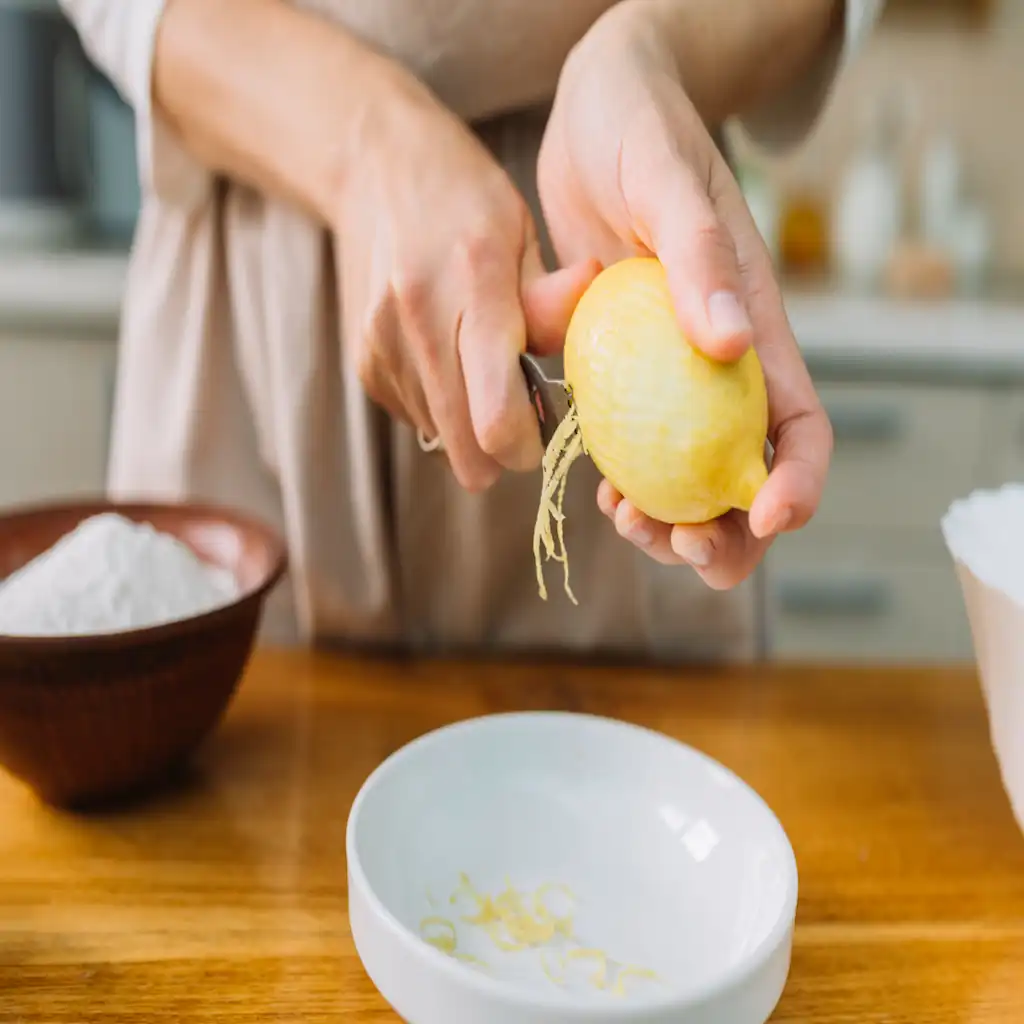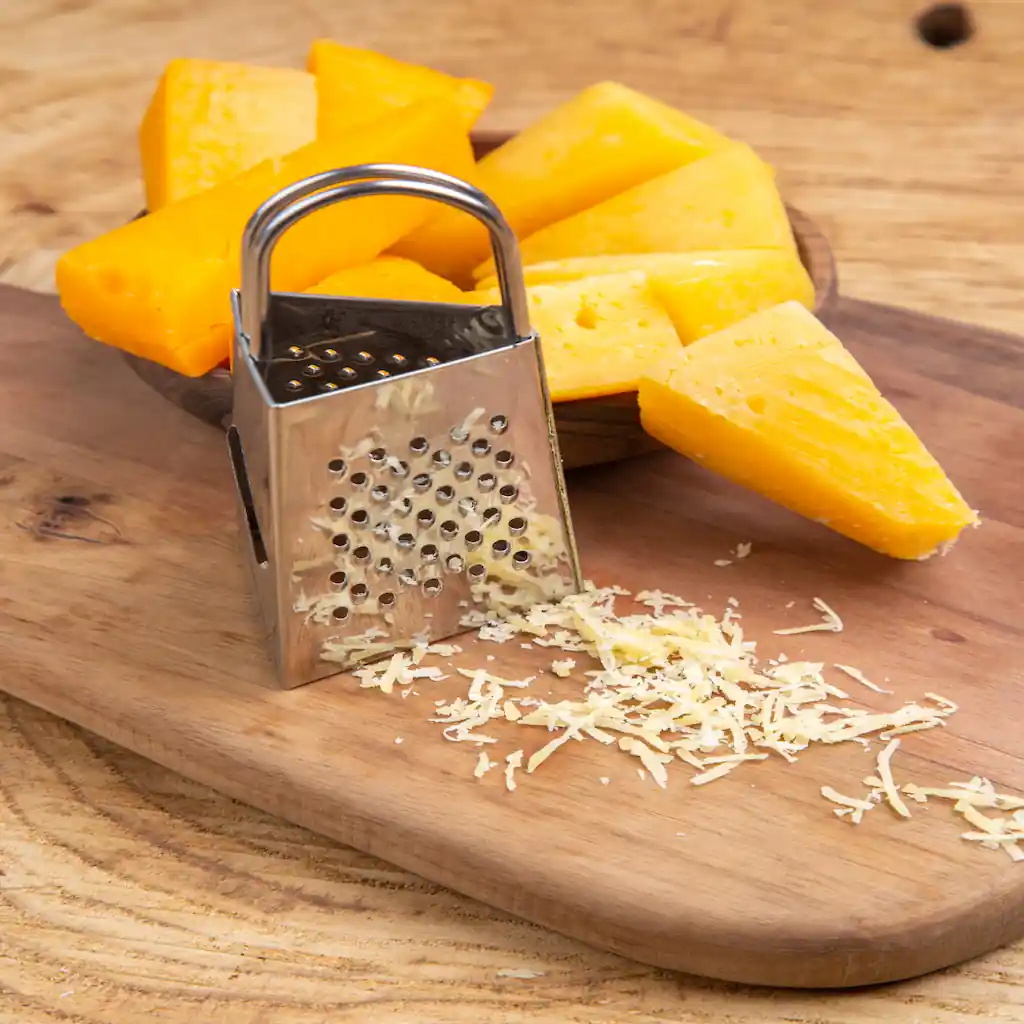Zesters are simple but powerful tools that can make your cooking more flavorful and fun. Whether you’re just starting to cook or are experienced in the kitchen, a zester helps you add fresh, bold flavors to your dishes. It’s perfect for scraping the bright outer layer of citrus fruits, grating hard cheese, or shredding spices like nutmeg and ginger. Incorporating a zester into your kitchen tools can elevate your culinary experience.
A zester isn’t just for looks. It adds fresh flavors to marinades, makes desserts smell amazing, and even improves simple meals like pasta or drinks. If you’ve enjoyed the taste of freshly grated zest or the fine touch of cheese on pasta, you’ve experienced the magic of a zester. This essential kitchen tool, the zester, can transform everyday recipes into extraordinary dishes.

Why You Need a Zester
Small Details Matter with Zesters
A zester is all about adding little details that make a big difference. By removing the thin outer layer of zest from fruits like lemons or limes, it adds a pop of flavor to sweet and savory dishes. The fine shavings mix well into sauces, batters, or dough, making sure the taste is even throughout. Using a zester can enhance your dishes and impress your guests.
So Many Uses for Zesters
A zester isn’t just for citrus fruits. You can use it to:
- Grate Parmesan cheese for pasta.
- Add fresh nutmeg or cinnamon to drinks or desserts.
- Sprinkle chocolate on top of cakes or hot drinks.
Whether you’re cooking for guests or just making a quick family meal, a zester is your secret helper.
What Is a Zester?
A zester is a compact and highly versatile kitchen tool designed for precision work. Its primary purpose is to remove the thin, flavorful outer layer of citrus peels, known as the zest, from fruits like lemons, limes, oranges, and grapefruits. This layer is rich in natural oils, which provide an intense, aromatic flavor ideal for enhancing both sweet and savory dishes. Unlike larger graters, a zester produces fine, delicate shreds, making it perfect for recipes, garnishes, and even non-food applications.
Key Features of a Zester
- Blade Design: Zesters typically feature small, sharp holes or grooves in a metal blade that scrape the zest without digging into the bitter white pith underneath. Some models also have microplane-style blades for even finer shavings.
- Handle: Most zesters have ergonomic handles, ensuring a comfortable grip during use, especially for tasks requiring precision.
- Compact Size: Zesters are lightweight and easy to store, making them a must-have in even the smallest of kitchens.
What Can a Zester Be Used For?
A zester isn’t limited to citrus fruits. Its versatility makes it an invaluable tool for various culinary tasks:
- Citrus Zest: Add vibrant flavor to cakes, cookies, marinades, or dressings. The zest can also be used as a garnish for cocktails or desserts.
- Spices: Finely grate hard spices like nutmeg, cinnamon sticks, or even whole cloves to elevate your recipes with fresh, aromatic seasoning.
- Cheese: Create delicate shavings of hard cheeses like Parmesan or Pecorino for pasta, soups, or salads.
- Chocolate: Use a zester to garnish cakes, coffee, or hot chocolate with fine chocolate curls.
- Garlic and Ginger: Quickly grate these ingredients to blend seamlessly into sauces, marinades, or stir-fries.
How to Use a Zester Effectively
- Hold the Fruit or Ingredient: For citrus, ensure the fruit is washed and dried. Hold it firmly in one hand.
- Angle the Zester: Position the zester at an angle against the surface.
- Apply Gentle Pressure: Use light, even strokes to remove the zest or grate the ingredient. Avoid pressing too hard, especially with citrus, to prevent scraping the bitter pith.
- Collect the Zest: The fine shreds will either collect on the back of the blade or fall directly onto your cutting board or bowl.
Why Choose a Zester Over a Grater?
While graters and zesters may appear similar, they serve different purposes:
- A zester creates ultra-fine shavings, perfect for subtle flavors or decorative garnishes.
- A grater is better for larger shreds, like shredded cheese or vegetables, but lacks the precision needed for zesting.
A zester is an indispensable tool for any home cook or professional chef. Whether you’re enhancing the flavor of a dish, creating an elegant garnish, or experimenting with unique ingredients, this tool is simple yet highly effective. For anyone who enjoys cooking or baking, a zester is a small investment that delivers big results in the kitchen.

Types of Zesters: Choosing the Right One
1. Handheld Zesters
- Best For: Small tasks like zesting citrus fruits.
- Pros: Easy to use and clean, affordable.
- Cons: Limited to zesting only.
2. Microplane Zesters
- Best For: Fine zesting, hard cheeses, and spices.
- Pros: Razor-sharp blades, great for precision.
- Cons: Costs more than basic zesters.
3. Rasp-Style Graters
- Best For: Multi-tasking; works on citrus, cheese, and chocolate.
- Pros: Large surface, easy for bigger tasks.
- Cons: Less precise for very fine zest.
4. Specialty Zesters
- Best For: Decorative garnishes and collecting zest in containers.
- Pros: Perfect for detailed tasks.
- Cons: Limited to specific uses.
5. Electric Zesters
- Best For: Large amounts of zest or commercial use.
- Pros: Fast and efficient.
- Cons: Expensive, takes up space.
How to Use a Zester
- Choose the Right Zester: Microplane for fine zest, handheld for simple tasks.
- Prepare the Fruit: Wash it to remove dirt or wax.
- Zest Lightly: Scrape just the outer layer to avoid the bitter white part (pith).
How to Take Care of Your Zester
- Clean Right Away: Rinse it after each use to avoid dried bits.
- Use a Brush: Clean out the grooves with a small brush.
- Store Safely: Keep it in a drawer or use a cover to protect the blades.
FFAQs About Zesters
1. What Can I Zest Besides Citrus?
Zesters aren’t just for lemons and limes! This versatile tool can handle a variety of ingredients to enhance your dishes:
- Hard Cheeses: Zest Parmesan, Pecorino, or Asiago to top pasta, soups, or salads with fine, fluffy shavings.
- Spices: Use your zester for whole nutmeg, cinnamon sticks, or fresh ginger to add a burst of flavor to baked goods or beverages.
- Chocolate: Create delicate chocolate shavings to garnish desserts, coffee, or hot chocolate for a professional-looking touch.
- Garlic or Shallots: Zesters can also finely grate these ingredients to blend seamlessly into dressings, sauces, or marinades.
2. How Do I Clean a Zester?
Proper cleaning ensures your zester remains sharp and effective:
- Rinse Immediately: Run the zester under warm water as soon as you’re done using it to prevent food from drying and sticking.
- Use a Brush: A small cleaning brush or an old toothbrush is perfect for dislodging tiny pieces stuck in the blades.
- Dishwasher-Friendly: Many zesters are dishwasher-safe, but check the manufacturer’s instructions first. If washing by hand, dry immediately to prevent rust.
3. What’s the Difference Between a Zester and a Grater?
Both tools are designed to shred and shave, but they serve different purposes:
- Zester: Produces fine, delicate shavings ideal for garnishes, zesting citrus, or grating spices like nutmeg. It’s perfect when you need subtle, evenly-sized pieces.
- Grater: Creates larger, rougher pieces and often has multiple blade options for different textures. It’s better suited for shredding cheese, vegetables, or chocolate for bulkier applications.
4. Why Does My Zest Taste Bitter?
Bitterness often comes from zesting too deeply into the fruit. Here’s how to avoid it:
- Avoid the Pith: The white layer underneath the colorful outer skin of citrus fruits is called the pith, and it’s bitter.
- Zest Lightly: Use gentle pressure to remove just the colorful outer layer of the peel, which contains the fragrant oils. A good zester will help you achieve this with ease.
- Use Fresh Citrus: Overripe or dried-out citrus can also contribute to an off flavor, so always choose fresh fruit.
Zesters are an essential kitchen tool for adding flavor, texture, and elegance to your dishes. Whether you’re creating citrus-infused recipes, grating spices, or garnishing desserts, mastering your zester will take your cooking to the next level. For more kitchen tips and tricks, explore the rest of our blog!
Conclusion: The Zester – A Small Tool with a Big Impact
A zester may be a simple kitchen tool, but its value is undeniable. Whether you’re an experienced chef or a home cook just starting out, a zester has the power to transform your cooking and baking. It allows you to add vibrant citrus zest to your dishes, freshly grate hard cheeses, or finely shred spices like nutmeg, elevating both flavor and presentation with minimal effort.
https://sourrecipes.com/smothered-turkey-wings-recipe/
Why Every Kitchen Needs a Zester
Zesters are incredibly versatile. They’re not just for zesting citrus fruits; they’re also perfect for adding fresh nutmeg to holiday drinks, grating Parmesan cheese over pasta, or garnishing desserts with fine chocolate curls. This adaptability makes the zester a key tool for both sweet and savory recipes, helping you create restaurant-quality dishes in your own home.
Ease of Use and Precision
One of the best things about a zester is how easy it is to use. With just a few swipes, you can remove the flavorful outer layer of citrus or shred ingredients into fine, delicate pieces that blend seamlessly into your recipes. The tool’s precision ensures that every bit of zest, cheese, or spice is just right, enhancing flavors without overwhelming your dish.
Inspiring Creativity in the Kitchen
Beyond cooking, zesters inspire creativity. They help you craft beautiful garnishes for cocktails, make decorative shavings for desserts, and even prepare DIY potpourri or infused oils. Whether you’re experimenting with new recipes or simply looking to add a special touch to your meals, a zester is your go-to tool.
Choosing the Right Zester
With so many types of zesters available—from handheld models to electric options—it’s easy to find one that fits your needs. If you’re just starting out, a basic handheld zester is a great choice. For those who frequently cook or bake, investing in a high-quality Microplane or rasp-style zester can take your culinary skills to the next level.
Start Zesting Today
Adding a zester to your kitchen is an investment in flavor, creativity, and precision. This small, affordable tool will quickly become one of your favorites, helping you create dishes that are not only delicious but also visually stunning.So why wait? Get yourself a zester today and start exploring its many uses. From creating vibrant marinades to garnishing desserts with flair, the possibilities are endless. Let the zester transform your cooking into an art form that delights your taste buds and impresses your guests. 🍋✨

